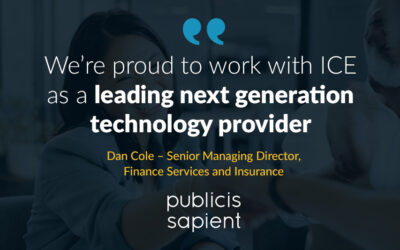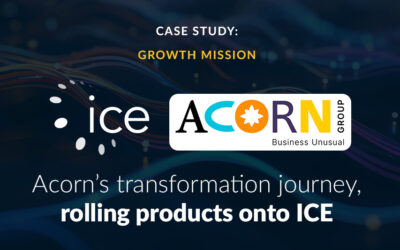I can’t remember the last time I received an RFI or an RFP for either an insurance Policy Solution or a Claims Solution which didn’t ask for a Customer Self-Service Portal.
It seems many companies are following the dream of customers being able to administer their own policies or claims thereby reducing cost of administration and maximising profits. There is also that much overused term of “improving the customer journey”. But let’s face it, people generally buy insurance because they must, so the “customer journey” can only be improved so far – usually it’s a process that simply has to be endured.
Customer portals generally fall into two categories.
- A portal that the Client has already built which is encumbered by the need to ensure it can be integrated with their chosen back-office supplier;
- A portal to be supplied by the software vendor who is providing the back-office Policy and/or Claims solution.
In either case careful consideration needs to be given to the functionality provided to the Policyholder end user. For example, we often get asked in a proposal if the solution includes the ability for the Policyholder to submit a first notification of loss (FNOL) online. Whilst most companies now see this as one of the key minimum requirements of customer self-service, I would argue that most Policyholders do not. Motor accidents, even small ones, and Home insurance claims tend to be stressful events. As such it is human nature to want to talk to another human about their event. In the early stages of a claim it is as much about “offloading” the event as it is about reporting it. People want to be heard, they want to explain their problem and they want reassurance that the matter will be dealt with. That human touch.
After the FNOL has been reported it is a different matter – the self-service portal becomes an effective tool for both insurer and insured if implemented in the correct manner. For claims, there should be an ability to receive updates, communications, upload and download documents and images and provide the Policyholder with the ability to “message” the claims teams with queries (either via chatbots or live chat facilities). Whilst the primary intention is to improve the customer experience, such facilities can also dramatically reduce call volumes. There is an argument that for certain small Home or Travel claims, the entire process could be brought online, which it can, but the key is getting that balance right between streamlining processes and identifying genuine, inflated, or downright fraudulent claims.
From an insurance policy and underwriting perspective, the solution is usually more obvious. Direct quote and buy, policy updates and amendments, billing schedules, documents and communications should all feature in a Policyholder portal, the same way as in any Agent or Broker portal. The only difference being the level of detail and terminology used for B2B and B2C environments. The only real consideration is the extent of services exposed via the portal to the Policyholder. Do you really want them to have an ability to cancel a policy online or would you rather guide them to a call centre to improve retention? Do you want to allow them to make any change or amendment or limit it to specific scenarios? From our experience at ICE InsureTech, very few companies get this right first time so it’s worthwhile understanding what does and doesn’t work well.
I’ve put together a simple list of ten things to consider before you roll out customer self-service across policy and or claims in your InsurTech business:
- Does the business need it and / or do my customers want it?
- What functionality should be offered and what will actually be used?
- What age group or other key demographic am I reaching out to?
- Are you building a portal or should my Policy / Claims software vendor provide one?
- Can all back-office functions be made available?
- How good is the integration from the portal to back-office and is it real time or delayed feed?
- Can back-office information, decisions, notes, communications etc be exposed back to the portal?
- Is it relatively straightforward to maintain data integrity within back-office target systems?
- Can the portal be viewed on any device and does it adhere to open standards of software development?
- The portal should be very responsive without unnecessary delay between screens.
From a Policyholder perspective, however, there are only really three things to consider: –
- Ease of Use
Most Policyholders are not insurance experts. The portal should make it easy to complete common and routine tasks quickly and easily. Navigation should be simple and straightforward, access to information and guidance should be presented clearly. Avoid annoying pop-ups and unnecessary clutter. - Control and Choice
Policyholders like to feel in control of what they are doing and consider they have decision making capabilities. For example, when comparing policies or add-on products, it should be made clear what is included or excluded and what the differences are. This can be explained in greater detail through FAQ’s, downloadable content and wordings, but it is essential that key differences are highlighted without having to navigate to multiple pages for an explanation. Side by side comparisons are ideal and let the Policyholder feel in control of the process. - Guidance and Advice
No one wakes up in the morning and leaps out of bed because they are looking forward to renewing or purchasing an insurance product! For many people it is a stressful, time consuming and expensive process. It is important to make the data entry, decision and purchase process as simple as possible and ensure that all the key guidance and advice is available at the primary level (this could include help icons or hover text as examples). This primary level information should also provide the ability to drill down to secondary or tertiary information if the customer wants to. FAQ’s, Chatbots, Live Chat facilities all help to humanise the process.
Get these key elements right and you could boost your sales and reduce internal administration whilst creating strong brand loyalty. Perhaps more importantly, get these elements wrong and you might practically eliminate an entire section of your target demographic. As a population, we are transacting more and more each day via the internet. Expectations of common functionality and ease of use are higher than ever and If you don’t have a robust and proven customer self-service portal your competition certainly will have.
For more information contact ICE InsureTech
More articles
The Power of ICE and Publicis Sapient
Imagine real-time, up-to-the-minute customer data – unlocking new opportunities and driving real change. That’s why we’ve partnered with Publicis Sapient, combining our strengths to offer insurers large-scale implementations in weeks, not years.
New Case Study: The Acorn Group’s Growth Mission with ICE
Acorn Group wanted to embark on a transformative journey to support its growth strategy as they scale as a business. ICE Policy has empowered them with a platform that enables Acorn to independently roll products onto ICE.
From Trainee Underwriter to CEO: Andrew Passfield’s journey to becoming ICE’s CEO
The latest Beyond the Desk Podcast episode is out! Our CEO, Andrew, joins Mark Thomas to share his incredible journey, from entering the insurance industry with no IT background, to leading an award-winning insurance software company experiencing significant growth....




